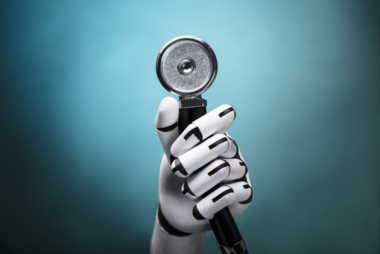The Lure of the Robot Doctor

You may have seen a news article or the viral video about a man who was informed he was dying by a telepresence robot. Per the NY Post, the patient was told the doctor was making rounds and would speak to him and his family. They were surprised to see the nurse wheel a robot into the room bearing a video screen of a doctor. The screen told the man and his family that “the hospital had run out of effective treatments,” and that he would die from his illness. The patient’s granddaughter was told that “the robot is ‘policy’ and ‘what we do now.’”
In a subsequent article in Vox, a physician acknowledges the issues with this particular use of digital technology, but extols the potential benefits of technology in medicine overall. “As we become increasingly inundated with innovation, he wrote, “digital technology has the potential to be a uniter of patients and doctors and not a divider. But technology is an instrument, and its success depends wholly on the human beings designing, deploying, and operating it.”
I think we should add an additional point to the doctor’s point-of-view. The success of medical technology will of course depend on “the human beings designing, deploying, and operating it.” But it will also depend on the bottom line of the organizations wielding it. Medicine is a business, both like any other, and unlike any other. The temptation to squeeze more revenue by “optimizing” practitioner time through replacing it with technology, will be just as keen in medicine as it is in customer service or retail. This will be particularly true in more rural areas that already suffer both practitioner shortages and financially squeezed practices, clinics and hospitals.
In the write-up for a Stanford symposium on the promises and pitfalls of technology in medicine, a professor of medicine said that, “ideally the data-driven, quantitative side of medicine would be balanced with the human aspect of a patient’s story and what a diagnosis means to that person’s life.”
“It’s no use knowing the genome and proteome of a patient,” the professor said, “if you’ve missed the fact that they have the outline of a cigarette packet in their shirt pocket.”
The symposium’s keynote speaker mentioned the hope is that technology and AI would provide physicians with a precious commodity: time. However, no mention was made of the profit motive’s drive to fill that time not with higher quality patient encounters, but with a greater quantity of them. Hopefully, that is something the medical profession can work a little harder to guard against. A ‘policy’ of sending robots in to deliver terminal diagnoses is not a promising start.
– Leonce Gaiter, Vice President – Content & Strategy








